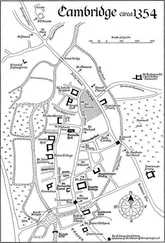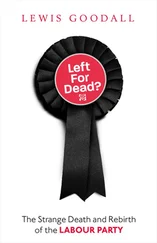There are many legitimate criticisms to be made of Blair. His decisions in the wake of 9/11, to religiously stick with a neoconservative American administration in particular, deserve much of the ire for which they are now known. Blair’s development into a political masochist, irritating his base, attacking students, the public sector, led to a drift from his social democratic beginnings. However, it is a gross, ahistorical and absurd contention that the New Labour years were ‘Tory-lite’. For all of its faults, the Labour government was not a Conservative (or conservative) one and did things that a Tory administration would never have countenanced. It fails to understand either what New Labour was or the historical and political moment in which the Labour Party found itself in the early to mid-1990s. Nonetheless, even though it was in fact a recognisably Labour government, it did, in its rhetoric, if not in its actions, sow the seeds of the leftist Corbynist revival that it was its raison d’être to banish and destroy. This is my attempt, 25 years on, to offer a rounded perspective on New Labour and its place in history.
NEW, NEWER AND NEWEST LABOUR
New Labour was an election-winning machine: it presided over by far and away the most successful electoral period in the party’s century-long history, achieving 13 years in office and three terms in government. It is nearly always forgotten now that before the 1997–2010 ministries the longest period the party had been continuously in office was five and a half years. Prior to 1997, the last time the party had won a decent majority was in 1966, under Harold Wilson. Yes, 1966. In other words, by the late 1990s it wasn’t just England fans enduring thirty years of hurt; decent Labour majorities felt nearly as rare as England winning the World Cup. The Conservatives were in office for sixty-six out of one hundred years of the twentieth century, about the same length of time as the Communists in the Soviet Union – and the Soviets hadn’t had the minor inconvenience of periodically having to secure the population’s consent. The Tories were election-winning dynamos and had moulded a nation in their own image. Labour’s performance, by contrast, had been anaemic.
New Labour, then, was a movement born out of desperation. The party, especially after the shock defeat of 1992, was questioning its very survival as a credible governing force. The original British (and better!) television series of House of Cards summed up well the mood of the early 1990s. The Machiavellian protagonist, Francis Urquhart, succeeds Thatcher as prime minister and goes on to win three more general election victories, each victory being narrow but absolute. At one point, Urquhart, seeking a new political adviser, asks a candidate to assess his government’s performance:
SARAH: Extremely effective. By not seeking the approval of all of the people all of the time you’ve put yourself in a very strong position. You’ve got 46 per cent of the people and that means you can afford to ignore all of the rest. And you do. Labour has no chance because it has no power base. Most of the underclass isn’t registered to vote. You’ve virtually destroyed the two-party system.
URQUHART: Good.
The exchange, initially broadcast in 1993, not long after the Conservatives’ fourth victory, is an insight into the now lost mindset of the mid-1990s political observer, especially when you remember that it was written by a Conservative peer. The Conservatives having enough people in the right places could dominate the House of Commons through the ‘first past the post’ system in perpetuity, especially given that Labour’s appeal was so limited. This theory was pre-eminent at the time: that Labour’s social base had proved too narrow and brittle, that as a party born in the fires of the smelter and the soot of the mines, of the manual and unionised working class, in an economy increasingly based on services, it was doomed to failure. The Tories, it was argued, had trapped Labour in a demographic cage. New Labour was an attempt to escape from its confines.
Such an attempt was hardly novel though. Today some talk in a way which seems to suppose that before New Labour came along the Labour Party was one monolithic bloc, ‘Old Labour’, comprised exclusively of miners, flat caps and whippets from the Jarrow marches onwards before the yuppies with the suits and briefcases and flat whites came along and snatched it from those to whom it truly belonged. In other words, that New Labour was unduly obsessed with and beholden to the middle classes. There’s truth to that charge but our problem comes with the assumption that New Labour was somehow unique in its bourgeois courtship; rather the Labour Party had been wrestling with expanding its appeal for a very long time, before Blair and Brown were even born.
As far back as the early 1950s, as the Attlee government slipped from power and an age of rationing and queuing gave way to one of affluence, Labour had been fretting about the salience of its ideological and social appeal. Much to socialists’ horror, many of whom had seen the 1945 government as the beginning of a destined age of socialist government, it was the Conservatives who would govern for the next thirteen years. It began to look as if the Attlee government, for all its achievements, would be socialism’s high-water mark, an apotheosis, an end, rather than a beginning. A new age of individualism and consumerism beckoned for which Labour seemed temperamentally and congenitally ill-suited. As one Conservative journalist observed, the English working class were characterised less by an interest in Marx and Engels, than in Marks and Spencer.
Thus the 1950s were a period of deep soul-searching for the party, and concern abounded that its reach was far too shallow. One study commissioned concluded that ‘Labour is thought of predominantly as a class party and the class that it represents is objectively and subjectively on the wane.’ Moreover, even members of that class were not necessarily friendly to Labour. As Hugh Gaitskell, by then party leader, said to the party’s 1959 conference in Blackpool: ‘We assumed too readily an instinctive loyalty to Labour which was all the time being gradually eroded.’ Harold Wilson’s ‘white heat’ speech, which came a few years after and today is remembered best as a call for state planning and investment in technology and science, was neither nearly so lofty nor futuristic as it appeared. It – and Wilson’s entire electoral strategy at the time – was an attempt to bring in new middle-class and technically educated voters. Wilson ran a campaign arguing that Labour was the classless party, the party of aspiration, for those who aspired to dispose of the primitive and outmoded distinctions of the place and status in which people were born. While the Tories of the grassmoor held back people of talent for reasons of snobbery, so a technocratic Labour government would liberate people of ability irrespective of class, so that socialism was for you if you wore a white coat or a flat cap. This built on Gaitskell’s observation at the party conference in 1959, where he said the worker (and voter) of the future would be ‘a skilled man in a white overall watching dials in a bright new modern factory’. Wilson was, he said privately, ‘making myself acceptable to the suburbs’. The language was different – Gaitskell and Wilson spoke of ‘intermediate voters’ rather than Blair’s ‘Mondeo Man’ or ‘Middle England’ – but the ambition was the same: to expand the Labour Party’s appeal in new quarters.
Wilson’s strategy worked for a while. In 1964 Labour scraped in and won big 18 months later, in 1966. By the 1980s, though, Labour’s white heat had long since cooled and the issue of the party’s social appeal once again seemed profound. MPs and leftists darkly whispered of the party’s ‘London effect’. As the party retreated to its old industrial heartlands of the Scottish central belt, the pit villages of the north-west and east Midlands, and the shipyards of the north-east, Labour struggled most of all in the capital. It seems hard for us to imagine now, but London – deindustrialised, service-dominated, liberal, full of non-unionised younger workers – represented all that Labour Party strategists and thinkers feared most. It was at the centre of the Thatcher revolution and potentially a harbinger of things to come elsewhere. By the late 1980s the party was 17 per cent behind the Tories in London, compared to only 9–10 per cent in the country overall.
Читать дальше












